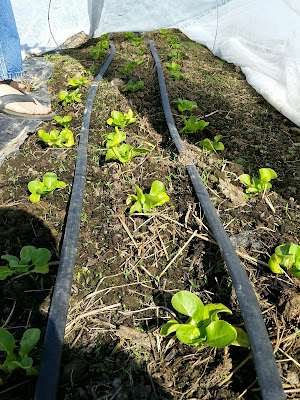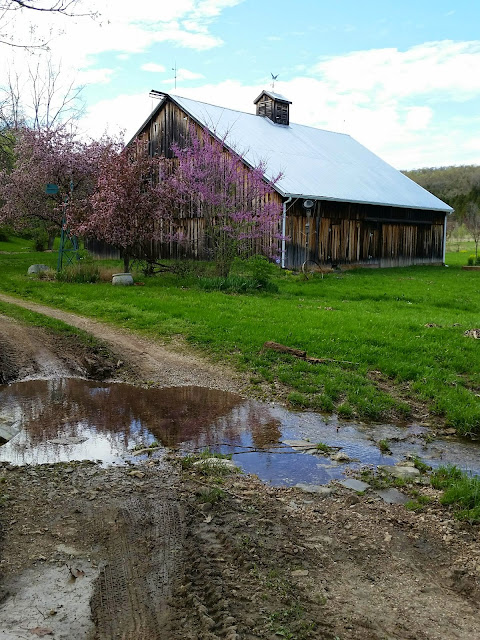Already this year, we have been blessed to make connections with great people. We met a man named Jess at the Missouri Organic Association conference that lives 10 minutes away from us and he was generous enough to loan us his trailer for a day so we could pick up compost from the St. Peters Earthway Centre. That was so awesome.
We purchased 10 yards of compost to help us add organic matter into our soil and continue to break up the Missouri clay. Without the compost in our soil, plant roots have a hard time pushing through the clay and growth is often stunted. Compost also helps the soil retain moisture and feed the plants with nutrients that are not readily available in the clay. The compost is organic and helps prevent us from having to use a lot of extra fertilizers. If you ever see the ground "cracking" on hot days, that usually means that there is more clay than organic matter in the soil. We try to prevent that as much as possible.


We have also been blessed by friends and strangers reaching out and volunteering at our farm. My friend, Dr. Jessica Taylor, wanted to get out of the house and come see our farm. Well, we put her to work & we planted over 100 potatoes that day. She admitted that it was great exercise and really fun to be out at the farm.
Then, we received a call from a young woman named Megan, who had worked as a Agricultural Educator in Guatemala through the Peace Corps. She missed being outside and farming and wanted to volunteer at our farm. What a blessing! She jumped in and started farming, wheel-barreling compost, and planting with us. She was such a HARD WORKER and cool person to get to know! Later, we found out that she lives two streets away from us in St. Peters. What are the chances of that??!
We love having the help, conversations, and good energy down on our farm! If you feel the urge to get outdoors and get some "dirt therapy," call us at 636-262-9792 or email us at info@leafygreensfarm.com anytime. We will teach you what we know and hopefully more people can grow, eat, and share produce with others.

























